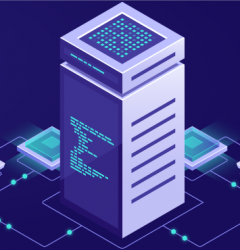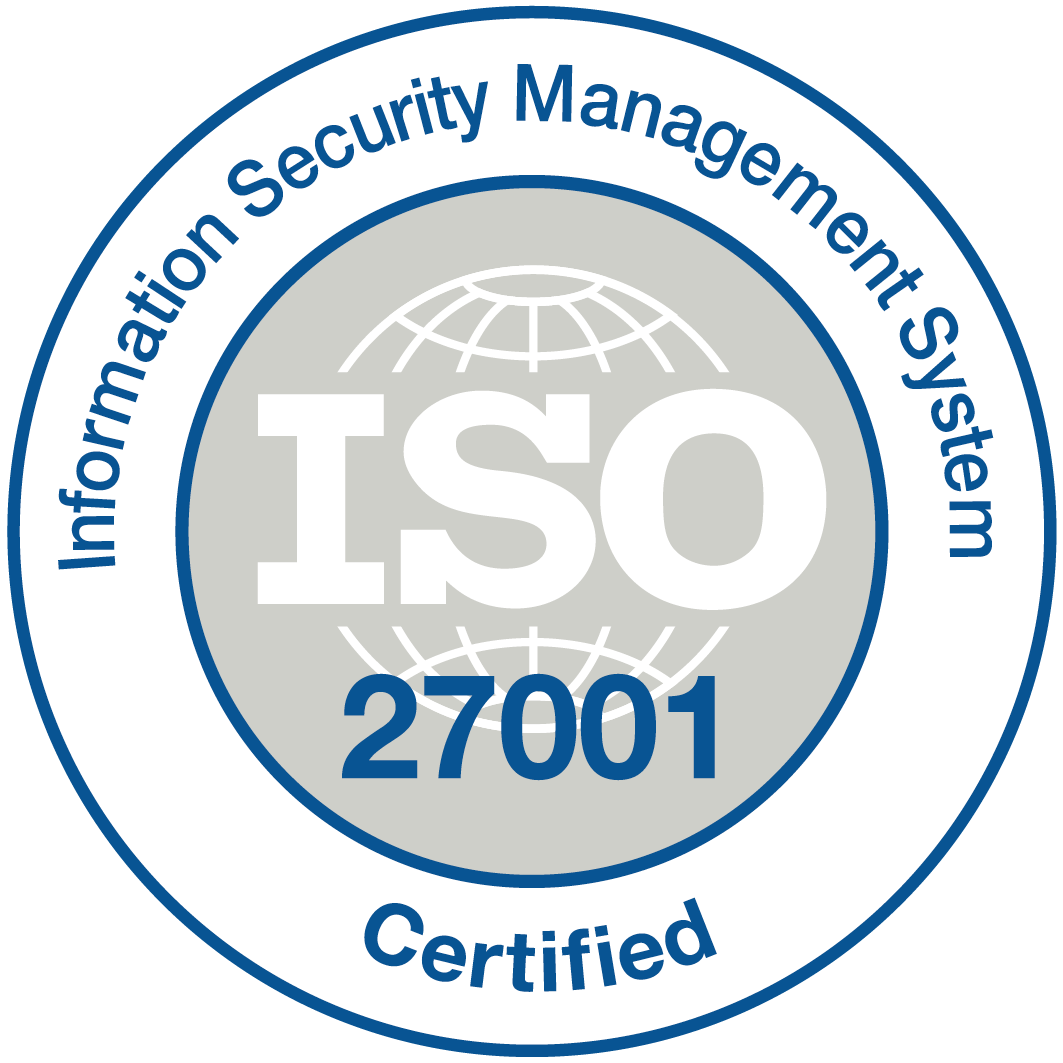
Let me ask you this – when you think about building software for your enterprise, what’s the first thing that comes to mind?
More developers. More resources. More code. Right?
However, the truth is that applications are being built by teams with fewer developers, less code, and in many cases, no code at all.
Sounds impossible? You’re not alone in thinking that. But the numbers tell a different story.
Gartner predicts that by 2026, over 80% of applications will be built using low code no code platforms. And the most surprising part?
A large chunk of these apps are built by people like you: your business leads, analysts, IT operations teams, and department heads.
Yes, Low code No code is real. It’s scaling fast. So, if you’re still wondering whether to take this shift seriously, let me be direct:
You can’t afford to miss it. You’re about to discover why low code no code isn’t just a toolset and why it define’s the next wave of enterprise innovation. Let dive in
Also read: The Future of Software is No Code and Low Code Programming
What is Low Code No Code?
For decades, organizations used to either buy pre-built applications with limited customization or rely on skilled developers to code everything from scratch. But now, Low-code and no-code (LCNC) development platforms are reshaping how modern enterprises build software.
Low Code Meaning – Low-code is a development approach that simplifies the software creation process through visual tools, logic models, and prebuilt components, while still allowing for custom coding where needed. It empowers professional developers to move faster and gives technically inclined users the ability to contribute meaningfully.

No Code meaning – No-code is the future. It offers an entirely code-free experience, enabling non-technical users to build functional applications using a fully visual workflow builder interface. No coding skills required. No syntax, no scripts – just logic, workflow, and configuration.
Think low-code as development with a boost – code is still present, but significantly reduced, and no-code is designed for the business user who knows the problem, and now has the power to build the solution.
Now that we know what no code and low code are, let’s explore their actual purposes.
Also read: Myths about Low-Code No-Code Platforms
What Are Low Code No Code Platforms?
They are visual development environments that are designed to simplify and accelerate the application development lifecycle. They provide users with a set of tools—drag-and-drop components, templates, logic flows, data connectors, and UI builders—that replace or reduce the need to write manual code.
But it’s not just about skipping syntax. It’s about empowering teams to move fast without compromising quality.
These platforms are designed to support a range of applications, from small departmental tools to enterprise-grade solutions, offering scalability, security, and seamless integration capabilities. Whether you’re creating a customer onboarding app, customized customer feedback management software, or automating internal workflows, LCNC platforms provide the foundation to do it, without relying solely on IT teams.
Now that we know what low-code and no-code platforms are, it’s worth understanding how they evolved to become such a powerful force in modern software development.
The Evolution of Low Code No Code App Development
Low-code and no-code development didn’t appear overnight. The idea began in the early 2000s with simple visual tools – like form builders, workflow designers, and spreadsheet macros – that enabled non-technical users to automate basic tasks. These early tools laid the foundation for something bigger: a way to build software without writing complete code.
The real shift happened in the last decade. As cloud technology matured and demand for faster development skyrocketed, LCNC platforms evolved from lightweight tools into enterprise-grade environments. They began supporting integrations, security, mobile deployment, and scalability, making them viable alternatives to traditional development, not just quick fixes.
Today, with digital transformation accelerating and talent shortages increasing, low-code and no-code have become a strategic necessity. Platforms now support AI, DevOps integration, and citizen development at scale – empowering both business and IT to innovate faster, together.
But what’s really behind this shift—and why now?
Why Is Low Code,No Code Gaining So Much Attention?
The momentum behind low code and no code platforms isn’t random – it’s the result of urgent and unavoidable shifts in both business process management systems and technology. According to McKinsey, the pandemic accelerated digital transformation by 3 to 5 years, compelling organizations to adopt faster and more flexible development models.
Meanwhile, the demand for software is skyrocketing – 85.2 million developer roles are expected globally by 2030, but the talent pipeline is falling short. These constraints are prompting enterprises to rethink how they build, automate, and scale.
This is where low code no code platforms step in, bringing unprecedented speed, agility, and accessibility to the App development process. And here’s what’s fueling the surge in enterprise adoption:
- Developer Shortage
- Speed to Market
- Empowering Business Users
- Post-COVID Digital Acceleration
- Proven ROI
- Fusion Team Enablement
- AI-Powered Development
But you think what is it for the modern business application development process?
What Does LCNC Mean for Modern Business Enterprises?
Low-code no-code means more than just rapid development- it’s a place for redefining how modern enterprises operate and innovate. According to Forrester and Gartner, businesses leveraging these platforms experience 50–70% faster app delivery cycles, accelerating time-to-value for digital initiatives.
Also, the Mendix State of Low-Code Report highlights that companies using LCNC tools can build 2x as many applications annually, all without expanding their development teams.
By modernizing legacy systems with less risk and cost, and boosting agility during change, LCNC has become a critical enabler of enterprise innovation and resilience.
Now, let’s understand the key features of our Modern Enterprises platform.
Key Features of Low Code and No Code Platforms
Low code No code platforms are designed to simplify the application development process using the Visual Application Builder, without compromising on power, control, or scalability. Here are the key features that make LCNC platforms the engine of modern innovation:
- Ready-to-Use Templates and Components – Accelerate app creation with pre-built form fields, workflows, dashboards, and logic blocks tailored for business use cases.
- Workflow Automation Engine – Automate repetitive tasks and streamline complex business processes using intuitive visual flow builders.
- Data Modeling and Management – Create data tables, define relationships, and build app logic without writing SQL or backend code.
- Role-Based Access Control (RBAC) – Secure your applications with user permissions, data-level security, and multi-level workflows for enterprise governance.
- Integration Capabilities – Connect easily with third-party tools, legacy systems, and cloud services through REST APIs, webhooks, or pre-built connectors.
- Real-Time Reports and Dashboards – Turn app data into actionable insights with customizable reports, charts, and dashboards – updated in real time.
- Responsive Design for All Devices – Build once, deploy everywhere. Apps work seamlessly across desktops, tablets, and mobile devices without extra effort.
- Version Control & Deployment Management – Track changes, roll back versions, and deploy updates smoothly with built-in lifecycle management.
- Built-in Validation & Business Rules – Ensure data accuracy and logic consistency through configurable validations and event-driven business rules.
Key Benefits of Low Code No Code Technology
Low-code,no-code is easier to use, has great agile frameworks, and has other top business benefits that make low-code,no-code platforms a game-changer.
Easier to Use
With intuitive drag-and-drop builders and prebuilt logic, LCNC platforms eliminate the need to start from scratch. This simplicity shifts the focus from writing code to solving real business problems.
Faster Development
Development cycles are significantly accelerated. According to Forrester, LCNC platforms can make development projects up to 10x faster than traditional coding methods, especially when reusing components and connecting to existing systems.
Increased Automation
LCNC platforms often include built-in automation engines powered by AI, ML, or RPA. By setting business rules and using intelligent suggestions, users can streamline workflows across multiple systems with minimal effort.
Simplified Data Integration
These platforms make it easier to connect systems and unify data. Users can collect, validate, and use information across workflows, leading to better decision-making with visibility into data ownership and accuracy.
Enhanced Privacy and Security
LCNC platforms reduce reliance on external vendors, lowering the risk of data breaches or IP exposure. So sensitive development work can be kept in-house with proper access controls and audit trails.
You’ve seen the benefits, but do you need to know the real difference between traditional app development and a Low-Code, No-Code platform? Here we go…
Low Code No Code vs Traditional Development
| Aspect | Low Code No Code | Traditional Development |
| Speed | 5x–20x faster development cycles (Source: Forrester) | Long cycles (weeks to months) due to manual coding and testing |
| Cost | Lower upfront and ongoing costs, minimal need for large dev teams | High cost for skilled devs, maintenance, and infrastructure |
| Accessibility | Empowers citizen developers, business users, and fusion teams | Requires expert developers with deep technical knowledge |
| Flexibility | Longer lead times for testing, QA, and deployment | Better suited for complex, highly customized systems |
| Time-to-Market | Manual code changes, higher technical debt | Rapid prototyping and launch are possible |
| Scalability & Integration | Scales with guardrails; integrates via APIs and connectors | Scales well but may need extensive integration work |
| Maintenance | Easier updates with visual tools, reusable components | Manual code changes; higher technical debt |
| Security & Governance | Enterprise-ready with RBAC, audit logs, lifecycle control | Excellent for standard apps, workflows, forms, and automation |
By now, you might have an idea of what’s best for you. Now let’s break down how low code no code tools work and make application development radically simpler.
How Do Low Code No Code Tools Work?
At their core, LCNC platforms eliminate the traditional barriers to software development. Rather than relying on teams of experienced developers writing thousands of lines of code, LCNC tools provide visual interfaces to design applications intuitively, just like assembling building blocks. Here’s how it works:
Visual App Builder
You build applications using a simple, visual interface – drag, drop, and connect elements like forms, buttons, and workflows. Even if you’re not a developer, you can build what you need with ease.
Reusable Components
These platforms come with pre-made templates, widgets, and logic blocks (like email triggers or approvals) stored in a library. You can reuse and customize them, which saves time and keeps apps consistent.
Smart Logic Behind the Scenes
As you build visually, the platform automatically converts your design into real, functioning code. You don’t have to worry about the technical side—it’s all handled in the background.
Workflow Mapping Made Easy
You can visually lay out business processes—like approvals, data entry, and alerts—using intuitive flowcharts. It’s like drawing how your system should work, step by step.
Quick Testing and Deployment
Once your app is ready, you can preview, test, and launch it with just a few clicks. No need to manage servers or backend code—the platform handles it for you.
Built for Teamwork
Advanced platforms like Quixy support collaboration between business teams and IT. With features like version control, access permissions, and governance, everyone can contribute without risking quality or security.
While low-code and no-code platforms continue to rise in popularity, many enterprises are still lagging in adoption. Those who don’t embrace this shift risk falling behind. So let’s discuss the business challenges without Low Code No Code Platforms.
What are Business Challenges Without Low Code No Code?
- Missed Innovation Opportunities – Without LCNC, only technical teams can build applications. This limits innovation to a small group while sidelining valuable ideas from business users who understand processes best.
- Slower Time-to-Market – Traditional development timelines can stretch over months. In today’s fast-moving markets, this delay directly impacts competitiveness and responsiveness.
- Increased Development Costs – Hiring and retaining skilled developers is expensive. Custom-coded apps also demand higher long-term maintenance costs, draining both budgets and bandwidth.
- IT Bottlenecks and Burnout – IT teams are often overburdened with backlog requests from across the enterprise. Without LCNC platforms, business teams are stuck waiting, and IT teams are stuck firefighting.
- Inflexible Legacy Systems – Modernizing legacy systems without LCNC is slow, costly, and high-risk. Enterprises often end up patching outdated software instead of innovating.
- Poor Collaboration Between Business and IT – When there’s no shared platform, business and technical teams operate in silos. Miscommunication, delays, and misaligned priorities become inevitable.
- Limited Scalability – Without reusable components and automation, every new project is a “start from scratch” effort. This restricts scale and slows digital growth.
While the global market for Low Code No Code (LCNC) platforms is set to surge, with projections estimating it will reach $52.74 billion by 2031. The tech giants aren’t just watching – they’re acting. CIOs and CTOs are embracing LCNC to tackle challenges head-on. Here’s why.
Also read: The Pros and Cons of Citizen Development
Why are CIOs & CTOs Embracing LCNC Platforms?
CIOs and CTOs are increasingly turning to low-code and no-code platforms to fast-track digital innovation, without disrupting core systems. These platforms enable enterprises to build modern, user-centric applications while maintaining their existing infrastructure. With composable, modular architectures, tech leaders can ensure flexibility and future scalability, crucial in today’s fast-changing digital landscape.
Beyond speed, LCNC empowers business users to co-create solutions alongside IT. This shift reduces development backlogs, boosts collaboration, and enables agile responses to evolving business needs. In a world where adaptability is key, LCNC platforms have become a strategic lever, helping CIOs and CTOs drive transformation at scale, with lower risk and higher velocity
As CIOs and CTOs recognize the strategic power of low-code and no-code solutions, the next big question arises: how do you choose the right platform that aligns with your enterprise needs?

What to Consider When Choosing the Right Low Code No Code Solution?
With dozens of LCNC platforms available in the market, making the right choice goes beyond surface-level features. Enterprises must evaluate platforms not just for what they can do today, but for how well they scale, integrate, and secure your future digital initiatives.
Here are the key factors to consider while choosing the Right Platform
- Scalability & Performance
Choose a platform that supports both small departmental apps and large-scale enterprise solutions without hitting performance bottlenecks. - Integration Capabilities
Ensure seamless integration with your existing systems—ERPs, CRMs, cloud services—via APIs, connectors, or custom data bridges. - Security & Compliance
Look for features like role-based access control, audit trails, and support for industry compliance (GDPR, HIPAA, etc.). Security can’t be an afterthought. - Governance & IT Oversight
The best LCNC platforms allow business users to build while giving IT teams complete control over deployment, monitoring, and version control. - User Experience & Ease of Use
Intuitive visual interfaces, drag-and-drop tools, and ready-made components are crucial for onboarding non-technical users quickly. - Customization & Extensibility
Even in a no-code world, flexibility matters. The platform should offer low-code extensions or custom scripting when needed. - Vendor Support & Community
Strong documentation, active user communities, and responsive support can significantly shorten your learning curve. - Cost and Licensing Model
Consider not just the upfront costs but the long-term ROI. Watch for hidden fees related to usage, storage, or scaling.
And now, here, choosing the right LCNC platform is only part of the equation. The fundamental transformation happens when your teams, beyond just IT, start building and automating their own solutions. That’s where citizen development comes in.
Also read: 5 Reasons to Encourage Citizen Development at Work
How Low Code No Code Powers Citizen Development?
Citizen developers are non-technical professionals – think operations managers, analysts, or finance leads – who use LCNC tools to create apps, workflows, and automations without writing traditional code. They use drag-and-drop components, guided workflows, and logic-based automation that match how business teams think and work.
This low code no code movement is not fringe—it’s fast becoming mainstream:
- According to Gartner, by 2026, 80% of technology products and services will be built by non-IT professionals.
- Citizen developers are rising fast—41% of non-IT employees are already building or customizing technology solutions themselves..
- Platforms like Quixy ensure governance and security are embedded from the ground up, giving IT oversight while still empowering business teams.
The result? A more agile, collaborative, and innovation-ready organization where everyone contributes to transformation, not just the developers.
Now that we’ve seen how citizen developers are rising, let’s look at how real companies—just like yours—are using low-code and no-code tools to solve big challenges, fast.
What are Real-World Use Cases for Low Code No Code?
Low-code and no-code platforms aren’t just for prototypes or internal tools anymore—they’re powering mission-critical applications across global enterprises. From automating complex workflows to building entire SaaS products, top brands are using LCNC to drive agility, efficiency, and scale.
Here’s how leading companies are leveraging low-code no-code in the real world:
- Pfizer – Enabling Rapid COVID-19 Vaccine Logistics – During the COVID-19 crisis, Pfizer used low-code tools to develop logistics and communication apps to manage vaccine distribution and compliance across borders.
Real impact: Deployed apps in days, managing vast distribution complexity. - Walmart – Digitizing Internal Workflows at Scale – Walmart used LCNC tools to digitize their logistics, scheduling, and supplier management workflows. They implemented apps that allowed teams to respond to store-level issues in real time and drastically reduce manual coordination.
Real impact: Faster supply chain issue resolution, improved collaboration - NASA – Process Automation Without Developer Bottlenecks – NASA leveraged Salesforce’s no-code tools to create mission tracking systems and approval workflows for administrative tasks. These tools were used by non-developers to automate tedious tasks, reducing reliance on IT and improving internal efficiency.
Real impact: Faster internal processing for mission-critical planning. - Goldman Sachs – Bridging Business and IT with OutSystems– Goldman Sachs used OutSystems, a leading low-code platform, to rapidly build internal apps for regulatory compliance and operational analytics. The time to develop certain apps was reduced from months to weeks, with direct collaboration between developers and business units.
Real impact: Faster compliance reporting and streamlined operations. - PepsiCo – Streamlining Field Operations – PepsiCo’s sales and field operations team used AppSheet (a no-code platform by Google) to build a custom mobile app for tracking retail visits, planogram compliance, and promotions—without writing a single line of code.
Real impact: Field reporting time cut by 70%, enabling real-time analytics.
Real-world wins prove LCNC’s power—but without strong guardrails, it can spiral fast. That’s why governance isn’t optional—it’s the backbone of sustainable success. let understand its need…

What are the 5 Pillars of Governance in the LCNC Platform?
Did you know that only 1 out of 1 IT projects is successful? That means the chances of success of big IT projects are very bleak. To truly scale in LCNC across the enterprise, governance must evolve from an afterthought to a foundational strategy.
So, whether you’re empowering citizen developers or modernizing legacy enterprise systems, these five governance pillars ensure your LCNC adoption…
- Access and Role-Based Control
- Reusable Components and Standardization
- Audit Trails and Compliance Monitoring
- IT Oversight with Collaborative Autonomy
- Lifecycle Management & Version Control
Strong governance is the foundation of sustainable low-code no-code adoption. These five pillars ensure that innovation happens within secure, scalable boundaries. Together, they empower business users to build with confidence, while giving IT the oversight needed to protect data, enforce compliance, and maintain control. It’s not about restriction—it’s about enabling rapid development at scale, without chaos.
Now, let’s explore the trends in low-code and no-code and how AI is advancing LCNC to the next level.
How AI Is Shaping the Future of Low Code No Code Technology?
Low-code and no-code platforms aren’t just becoming faster—they’re becoming smarter, thanks to the rise of Generative AI, Smart AI agents, and Autonomous Assistants.
- Generative AI is now embedded in many LCNC platforms, letting users build apps by simply describing what they want in natural language. Just say it, and your workflow, interface, or logic gets created instantly.
- AI Agents are acting as behind-the-scenes builders. These intelligent bots can monitor app performance, suggest improvements, auto-create modules, and even fix bugs without developer intervention.
- Smart AI in LCNC is turning platforms into co-pilots. Think real-time optimization, contextual automation, and predictive logic—all powered by your app’s data and behavior.
- From idea to deployment, AI now helps you brainstorm, design, build, test, and even evolve your application—with minimal human effort and maximum speed.
But the future of low-code/no-code isn’t just low-code no-code —it’s LCNC built by AI, driven by insight, and scaled with intelligence.
How does a Low-Code No-Code Strategy Look in Action?
A proper no-code/low-code strategy is not just a tech initiative—it’s a shift in how your organization thinks, collaborates, and delivers value. Here’s what it looks like when done right:
Business-IT Co-creation with Fusion Teams
Cross-functional teams—made of business users, developers, and IT leads—collaborate to rapidly ideate, prototype, and ship applications. This bridges the traditional gap between “what business wants” and “what IT delivers.”
Citizen Developer Enablement at Scale
Non-technical staff are trained, certified, and empowered to build apps that solve everyday challenges—from internal approval workflows to customer support tools—without waiting in IT queues.
Governance-First, Not Governance-Later
The strategy includes clearly defined guardrails, audit trails, and compliance protocols. Enterprise-wide rules are enforced without sacrificing user autonomy, striking a balance between speed and security.
Strategic Reusability of Components
LCNC success relies on creating reusable templates, data models, and logic blocks that cut development time and bring consistency. You build once, scale across departments.
Data-Driven Iteration & Feedback Loops
Feedback from users and data from analytics is used to continuously improve applications, enabling rapid iteration cycles instead of months-long rebuilds.
Deep Integration with Core Ecosystems
A robust strategy ensures LCNC platforms are not isolated. They’re deeply connected to CRMs like ERPs and other workplace productivity suite and even AI services like OpenAI or Azure ML.
LCNC Centers of Excellence (CoE)
Many enterprises set up an internal LCNC CoE—a team responsible for governance, training, best practices, support, and continuous improvement of the LCNC program.
Outcome-Oriented Use Case Prioritization
It’s not about building everything on LCNC—it’s about prioritizing high-impact, fast-delivery use cases where speed and business input matter most. Think: digital process automation, internal tools, and customer-facing apps.
Vision Alignment with Enterprise Goals
Above all, a great LCNC strategy is aligned with business outcomes—whether it’s faster go-to-market, cost efficiency, better customer experience, or digital resilience.
What is The Role of Quixy in the Future of Low Code No Code?
Let’s be honest—not all low-code/no-code platforms are created equal. So you need more than just drag-and-drop features. You need power, control, and flexibility wrapped in a user-friendly interface that both IT pros and business users love. That’s exactly where Quixy steps in.
Whether you’re a CIO looking to accelerate digital transformation or a business head wanting to automate workflows without writing a line of code, Quixy delivers the tools—and trust—you need.
Here’s what sets Quixy apart:
- End-to-End Application Building – 10x Faster
With Quixy’s visual app builder, build complex, custom business apps—without code. Reuse components, create logic visually, and launch apps in days, not months.
- AI Caddie – Build Smarter, Not Just Faster
Our AI-powered assistant, Caddie, simplified AI report generator from recommending field types and app icons to even helping define workflows and validations. It’s like having a co-pilot for your development journey.
- Enhanced App Events & Business Rules (Event 2.0) Define exactly when and how your validations and business rules management should trigger—on submit, on field change, or even on workflow actions. Precision like never before.
- ER Diagram View – Clarity Meets Control
Visualize data relationships with a single click. Whether you’re working with complex tables or simple lists, the ER View helps you manage your data models effortlessly.
- One-Click Multi-Device Deployment
Design once, run anywhere—desktop, tablet, or mobile. No separate builds. No responsiveness headaches.
- Advanced Email Configuration
Customize ‘From’ addresses with support for multiple SMTPs. Perfect for sending branded, role-based communications directly from your workflows.
- Workflow Automations & Approvals
Automate processes, define conditional paths, and trigger real-time actions—without writing a single line of code.
- Governance? Covered.
With role-based access, audit logs, version controls, and sandbox testing, Quixy ensures your LCNC journey is secure, compliant, and enterprise-ready.
Why Trust Quixy
Top organizations across industries – from BFSI to Manufacturing—use Quixy for digitization operations, reduce turnaround time, and build solutions with zero dependency on external developers.
So, if you’re looking for a no code low code platform that goes beyond the basics, Quixy is built for you. For effortless management of applications with customised rapid application development using Quixy’s advanced AI-powered low-code no-code platform.
To find out more, schedule a demo call and get ready to unlock agility, speed, and innovation on your terms.
Frequently Asked Questions ( FAQ’s )
What is the low code no code movement ?
The low code no code movement is about making software development accessible to everyone—not just IT teams. It’s gaining momentum because enterprises need faster, scalable solutions without depending heavily on developers. With platforms like Quixy, even non-technical teams can build powerful apps using a visual interface, reducing time-to-market dramatically. The movement is no longer just a trend—it’s a shift in how businesses innovate.
What’s the difference between no code vs low code platforms ?
No-code platforms like Quixy let non-developers build apps without writing a single line of code—perfect for business users who understand the problem and want to solve it themselves. Low-code adds flexibility for developers to extend with custom code if needed. Quixy blends both worlds—so whether you’re in operations or IT, you get a platform that adapts to your skills and needs.
How does LCNC automation improves business & reduce manual work?
Low code no code automation, especially with Quixy, empowers teams to design workflows, trigger actions, and integrate systems—all without coding. Imagine automating approvals, alerts, or reports that used to take hours… now done in minutes. With AI-driven suggestions and reusable logic in Quixy, automation becomes smarter and faster—freeing your team to focus on what really matters.
Should I go with LCNC tools for faster app development or hire developers?
Absolutely—especially if you want results without the complexity of traditional development. With Quixy’s drag-and-drop builder and advanced AI tools, teams can create secure, enterprise-grade apps without needing a full dev team. Whether you’re building internal tools or customer-facing apps, Quixy enables rapid development with governance and control built in.
Is low code programming the future, and how will it evolve with AI?
es, the future is already here. With AI capabilities baked into platforms like Quixy, low code programming is evolving beyond simple builders. Quixy’s AI Caddie, for example, assists in app logic, generates suggestions, and speeds up workflow automation—bringing intelligence into every step of the build process. The future of low code no code is smart, scalable, and citizen-developer-friendly—and Quixy is leading that evolution.
Subscribe
Login
Please login to comment
0 Comments
Oldest















